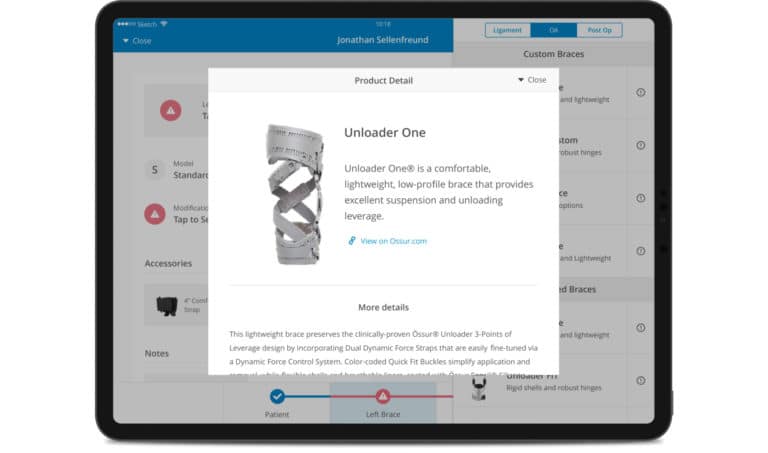How to Reduce Labor Costs Without Cutting Workforce: The Best Tips
Updated: June 4, 2025
Have you ever been tangled up in the tricky financial knots of running your business, especially when the economy throws you a curveball? Maybe it’s a global crisis, a recession, or a market slump that leaves you scratching your head about how to cut back on your biggest expense – labor costs, without shrinking your team. You may be wondering, is it even possible to walk that tightrope?
Firing team members might seem like a quick fix when times get tough. But it often brings long-term consequences, such as a drop in morale, an overwhelming workload on the rest of your team, and a drain of talented employees.

We provide companies with senior tech talent and product development expertise to build world-class software. Let's talk about how we can help you.
Contact usBut here’s the good news: With thoughtful and creative decision-making that fuses efficiency and care for your team, you can reduce labor costs and keep your workforce strong and motivated. Stick with us; we’ll walk you through all the essential insights you need.
Table of Contents
What are labor costs?
Wondering what labor costs really mean? Labor costs cover all the money a company spends on its workforce – salaries, perks, and payroll taxes. These expenses can be neatly divided into two categories – fixed costs and variable costs.
- Fixed Labor Costs: Think of these as the costs that don’t change over time, regardless of how much your company churns out. They typically include salaries or wages you’ve committed to paying your employees for a certain period. Essentially, fixed labor costs are those predictable, steady expenses your business has to shoulder, no matter how production or service demand swings.
- Variable Labor Costs: Now, variable labor costs are a completely different game. They fluctuate up and down based on factors like production demand and economic trends. Say your software development firm is juggling a big project that needs overtime or extra temporary staff – that’s when your labor costs will increase. But these costs might shrink when things settle down and you need fewer hands on deck.
You can also slice and dice labor costs into:
- Direct Labor Costs: These costs are tied to employees who are hands-on in producing your company’s goods or services. Let’s say a software engineer dives deep into coding while building your company’s new app – that’s a direct labor cost. Their work is a vital piece of the service your company delivers.
- Indirect Labor Costs: These are costs linked to employees who back up the production process but aren’t crafting the product or service. Imagine a system administrator who maintains the operation of your company’s servers – that’s an indirect labor cost. While they’re key to the whole operation, their work isn’t directly connected to the app’s creation.
But the more you spend on labor, the less might be left in the kitty for other crucial business aspects, such as process improvements or technology upgrades. So getting your head around these different labor cost examples is an essential first step towards figuring out how to smartly manage and trim them without downsizing your team.
Components of Labor Costs
Labor costs are more than just the cash in your employees’ pockets. They’re a web of interconnected costs that make up your company’s total labor expense. Let’s break these components down:
- Salaries or Wages: The main thing is the cash compensation your employees take home for their hard work. This might be calculated hourly, daily, or yearly, depending on how your organization operates.
- Perks: Employee benefits are another slice of the labor costs pie. Think about health insurance, retirement fund contributions, paid time off, sick leave, and other nice perks your company has to offer.
- Payroll Taxes: As an employer, you’re on the hook for certain taxes on your employees’ behalf. Social Security, Medicare, and unemployment taxes are all part of the package.
- Overhead Costs: Then there are the costs tied to giving your employees the tools and environment they need to do their jobs. Rent for office space, utilities, equipment, supplies – all these overhead costs factor into your total labor costs.
Understanding these components is key to getting a full picture of your labor costs. This, in turn, can help you pinpoint where you could cut back or optimize without letting go of your valuable team members.
Methods of Labor Cost Calculation
Knowing how to calculate labor costs is an essential skill every business owner should have in their tool belt. Let’s walk through the most widely used methods:
| Methods | Description |
| Per Unit Labor Cost | This approach breaks down your total labor cost per unit of output. Simply divide the total labor cost by the number of units produced to reveal the labor cost that goes into creating a single product or service. |
| Hourly Labor Cost | Ever wondered how much your labor costs every hour? Just divide the total labor cost by the total number of hours worked. This gives you a bird’s-eye view of your hourly labor expenditure. |
| Labor Cost Percentage | Here’s where labor costs meet the big picture. By calculating labor cost as a percentage of total operational costs or total revenue, you’ll see the slice of your expenses or revenue that’s dedicated to labor. |
| Departmental Labor Cost | Dive deeper into labor costs by department. Pinpointing the total labor cost for a specific department can shed light on where the bulk of labor costs are coming from. |
| Project-based Labor Cost | If your business revolves around projects, this method is for you. Calculating labor cost per project helps spot labor-heavy projects and enables you to manage resources more effectively. |
Tips on How to Cut Labor Costs without Laying Off Staff
When it comes to reducing labor costs, there is one key principle to remember: every employee is not just a cost but also a valuable source of skills, knowledge, and on-the-job experience. Simply firing an employee with their unique skills and contributions may not be the most strategic move for your bottom line. But how do you keep your team intact while managing labor costs effectively?

There are more inventive and, let’s say, smarter approaches to cost reduction. Let’s navigate through some tried-and-true ways to reduce labor costs without cutting headcount:
Optimizing Schedules and Work Hours
Your first stride towards reducing labor costs lies in the intelligent management of work schedules. We’ve seen this in action with Iceland’s success story: they reduced work hours but kept productivity high, thus reaping the benefits of sustained labor cost savings. It’s actually quite simple: when people work fewer hours, they avoid burnout and productivity skyrockets.
One strategic maneuver in controlling labor costs can be transitioning full-time roles into part-time ones. Imagine two part-time employees taking on the work of a full-time position. This not only trims labor costs but might also reduce the overhead costs tied to office space.
But let’s remember, creating schedules is not about playing dice. They should be predictable, not random. Make it a practice to share schedules in advance and plan rest periods. Stay away from long work hours like marathon 12-hour shifts. Fatigued employees are often less productive, and let’s not forget your team’s well-being is the bedrock of cost efficiency.
Bidding Adieu to Overtime
Overtime can act as a silent inflator of labor costs. Workers clocking in extra hours usually command a higher pay rate, which can add a sizable chunk to your labor expenses. Hence, an effective way to lower labor costs is by nailing the art of scheduling to dodge overtime.
Efficient task distribution and adept workload management can ensure tasks get wrapped up within regular work hours. Inspire a culture that champions productivity during the regular workday, and overtime might just be an infrequent visitor. Remember, effective planning and clear communication are your allies in avoiding overtime without hindering productivity.
Implement Cross-Training of Employees
Cross-training isn’t just a tactic—it’s a winning strategy for significantly chopping down labor costs. What does it involve? It’s about equipping your team to handle diverse roles or tasks that extend beyond their immediate job duties. This kind of workforce versatility is your key to agility, letting you adapt to shifting business currents with grace.
Picture this: team members effortlessly step into each other’s roles, ensuring the business machinery never grinds to a halt—even when some members are absent. This level of adaptability prevents the need for new hires or outsourced assistance during peak times, and that spells smart labor cost management.
But don’t limit your perspective to just dollar signs; cross-training offers a wealth of other benefits. It fuels engagement and boosts team morale, presenting opportunities for personal growth and skills development. It’s not so much an expense as it is a strategic investment—one that may require a little upfront effort but pays off well in the long run.

Give Your Employees a Break
Now, you might raise an eyebrow at the notion of regular breaks—surely they’re a drain on time and resources? Well, here’s a surprising truth: this simple strategy can yield impressive savings over time. You see, when team members have the breathing space to recharge and refuel, we keep burnout at a safe distance, fuelling a productivity surge and elevating work quality.
And that’s not all. A work culture that champions regular breaks can also eliminate two of the biggest contributors to soaring labor costs: absenteeism and employee turnover. When employees feel their well-being matters, they’re likely to be more engaged and committed, injecting a positive vibe into your wider work environment. So, don’t be stingy with breaks—they’re a tiny investment with a potentially huge payoff.
Alter Your Rosters to Match the Company’s Workload
Do you sometimes feel like your team is just trudging through a rigid schedule, week in and week out? If that rings a bell, it’s time to rock the boat. Have you ever thought about aligning your team’s schedules with the flow of your business operations? It’s a powerhouse strategy for managing labor costs.
Imagine this: when things are quiet, do you need the entire team on deck? Of course not! Lightening the staff load during these times can help cut back on labor costs. But then, when things are hopping, you will need all hands on deck to keep up with the surge. If your schedules align with these natural business cycles, you can be sure you’re only splashing the cash on labor when it truly counts.
Sure, this tactic does require a sharp eye on your business’s workload and an open line of communication with your team. But when you get it right, this way of estimating labor costs can mean big savings. It’s like taking your business to the superhighway of efficiency.
Review Your Compensation Plan
Keeping your compensation in line with industry standards and ensuring it packs a punch for your team is absolutely key to keeping those labor costs in check.
Picture this, if you’re cutting checks that are way higher than they need to be, you’re basically pumping up your labor costs for no good reason. On the other side of the coin, if you’re pinching pennies on salaries, you could find yourself on a never-ending merry-go-round of staff turnover – and guess what? That’ll send your labor costs through the roof too.
It’s all about taking a close look at salaries, perks, bonuses, and all the other goodies in your compensation package. Regular check-ins can ensure your pay packages keep up with the average rates and strike a balance between being competitive and fair. This will reel in the best talent and keep them hooked, all while keeping a tight leash on those labor costs.
Employ Technology and Automation
Now, let’s talk tech and automation – these are the real MVPs for chopping down those labor costs. Do you know all those mundane tasks that seem to waste your team’s time? Well, many of them can be automated, freeing up your crew to zero in on more high-value, strategic tasks.
You’re probably thinking about the initial cash you’ll have to shell out for these shiny new tech tools and automation systems. But let me assure you, the long-game savings are worth the investment. Plus, let’s be honest, these automated systems can often run circles around us humans regarding speed and precision – that’s efficiency and cost-effectiveness right there.
And let’s not forget about the bonus round: getting tech-savvy can give your business a real leg-up on the competition, streamline your operations, and could even unlock new opportunities. It’s a forward-thinking move that doesn’t just slash labor costs but also propels your business toward future growth and success.
Review Your Payment Model
Now, let’s chat about your pay structure. Believe it or not, this can take a big toll on your labor costs. Whether it’s hourly wages, fixed wages, or contract payments, the way your team is paid can cause your labor costs to skyrocket or cut.
Take this for example: if you’re paying hourly wages for a job that sees hours jump all over the place, you might want to change lanes and opt for a salary model for more predictable costs. Conversely, if there’s a role with a lot of downtime, an hourly pay model might help trim costs.
You can streamline your labor cost management by doing regular check-ins and making little tweaks to your pay structure based on the role and work demand. And sometimes, outsourcing software development or contract work might be the best route for your wallet.
Tap into the Global Talent Pool: Outsourcing as a Proven Method to Lower Labor Costs
Have you ever thought about going global with your talent search? Outsourcing to professionals from other countries could save you big bucks while revealing diverse skills and fresh perspectives. It’s a win-win for your budget and your business.
Want to explore this more? Our e-book, “How to fill the tech talent gap easily and quickly with a remote workforce,” is your ultimate roadmap. It’ll guide you to ace outsourcing, find stellar specialists, and pick the cream of the crop without breaking a sweat.

Here’s a quick teaser: An American software developer could be bagging up to $90,000 yearly, while an Eastern European might make less than $42,000. That’s not just statistics- it’s a golden opportunity to save while sourcing top talent.
To make things crystal clear, take a look at the chart below.

Pros and cons of hiring employees abroad
Extending your hiring horizons to encompass foreign territories can be a savvy strategy to rein in labor costs. But, like any strategy, it has its fair share of hurdles too. Let’s unpack the pros and cons of this approach.
On the bright side:
- Money Matters: When you hire from countries where the cost of living is relatively lower, your wage expenses can drop dramatically. You may be able to hire top-notch professionals at a price significantly lower than your local market. (Here’s a little insider secret for you. When it comes to balancing cost and quality, outsourcing to Eastern Europe is a smart move).
- Dive Into a Vast Talent Pool: Expanding your search can help you find a wider variety of talented people. This can be a game-changer in fields like technology, where there’s often a shortage of local talent.
- Round-the-clock Operations: Having an international team working across different time zones means your business never sleeps. This can supercharge your customer service and productivity.
On the flip side:
- Lost in Translation: Language nuances and cultural disparities can lead to communication hiccups, potentially tripping up productivity and efficiency.
- Legal Maze: Different countries come with their own sets of labor laws, tax regulations, and business practices. Navigating through these can feel like a tricky labyrinth and may require extra resources.
- Managing Across Miles: Managing a team scattered across various time zones and cultures can be quite a tightrope walk. It can put team cohesion to the test and requires a certain skill set for successful management.
To wrap it up, while hiring employees from overseas can certainly be a smart move for your budget, weighing the potential challenges against the benefits is essential. Make sure you’re well-equipped with the right resources and strategies to tackle any obstacles that come your way.
Best Practices List for Effective Outsourcing to Reduce Labor Costs
So, you’re ready to dive into outsourcing as a way to low labor costs? Great choice! But remember, it’s not all about picking the cheapest provider. It’s about playing your cards right. Here are some top tips to get the most out of your outsourcing investment:

- Go for Value, not Cheap: It might be tempting to jump at the lowest price, but what you really want is value. A provider with a slightly higher rate could offer top-notch quality, unbeatable expertise, and turbocharged efficiency. Trust us, this could lead to bigger savings in the long run.
- Streamline Your Game: Before handing off tasks to an outsourcing provider, give your processes a good scrub. Make them streamlined, standardized, and up-to-date. It’ll make the transition smoother and save you from costly mistakes.
- Think Big, Scale Up: One of the coolest things about outsourcing? The ability to scale your team up or down on demand. You only pay for what you need when you need it. Hello, considerable cost-cutting!
- Leave Core Functions In-house: Outsource tasks that aren’t directly pumping up your bottom line. This way, you can dedicate your resources to the areas that are really bringing in the profits.
- Keep Communication Channels Wide Open: Clear, open communication can squash misunderstandings before they grow into expensive problems. Set clear guidelines, outline expectations, and touch base regularly to make sure tasks are completed correctly and efficiently.
- Check Performance Regularly: Keep a watchful eye on your outsourcing provider’s performance. Use key performance indicators (KPIs) to measure their impact and adjust your strategy as needed objectively.
By sticking to these best practices, you’ll maximize the cost-saving benefits of outsourcing and ensure it’s a real boon to your bottom line.
Relevant Software: Your Go-To for Hiring Developers in Ukraine
At Relevant, we’re not just another name on your list of outsourcing providers. We’re aiming to be your trusted partner, your go-to for building an affordable, dedicated software development team that fits like a glove. We open up a world teeming with specialists of all skills and seniority levels. Whether you’re a company looking to beef up your expertise, battling deadlines, or a startup raring to scale at warp speed, our model is crafted just for you.

How do we implement this, you ask? It all starts with listening. We do our best to truly understand your needs in depth. Then, we dive into our pool of potential candidates with a robust 5-step selection process, covering pre-screening, interviews for soft and hard skills, English proficiency tests, and reference checks.
Our seasoned pros, brimming with know-how and field experience, flawlessly fold new members into your existing workforce. We tap into our wide network of partners and freelancers, picking tools and methods that promise snappy project turnaround times.
When you pair up with our IT outsourcing company, you get a dedicated team of specialists who are always at your service, much like an in-house team. The only twist? They’re remote. And the icing on the cake? We tackle all the admin tasks, freeing you to zero in on your core business functions.
Ready to partner with us and make big things happen? Contact us!
FAQ
Our core services:
Do you want a price estimate for your project?
Do you know that we helped 200+ companies build web/mobile apps and scale dev teams?
Let's talk about your engineering needs.
Write to us











